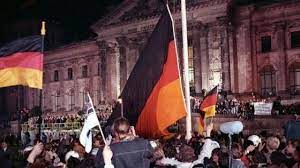The Historic Division of Germany: Exploring the Federal Republic of Germany and the German Democratic Republic

In a significant turn of events in 1949, Germany underwent a formal split, resulting in the formation of two independent nations that would shape the course of history. The Federal Republic of Germany (FDR or West Germany) emerged as an ally to the Western democracies, while the German Democratic Republic (GDR or East Germany) found its allegiance with the Soviet Union. This article delves into the intriguing tale of this division, shedding light on the distinct paths taken by these two nations and their global implications.
1. The Federal Republic of Germany: Embracing Democracy
The Federal Republic of Germany, commonly known as West Germany, established itself as a democratic nation and aligned with the Western democracies. This move marked the beginning of an era characterized by political freedom, economic prosperity, and close ties with the United States and its allies. Let’s explore the key aspects of the Federal Republic of Germany:
1.1 Political Landscape and Governance
In the Federal Republic of Germany, the parliamentary system thrived, with a President as the head of state and a Chancellor as the head of government. This democratic structure facilitated the voice of the people and ensured a robust decision-making process. The nation prioritized individual liberties, human rights, and the rule of law, creating a stable foundation for its growth.
1.2 Economic Advancements and the Wirtschaftswunder
West Germany witnessed an impressive economic transformation following its formation. The implementation of market-oriented policies and the Marshall Plan aid from the United States fueled rapid reconstruction and industrial development. This economic revival, known as the Wirtschaftswunder (economic miracle), propelled West Germany to become one of the world’s leading economies.
1.3 Global Alliances and NATO Membership
To safeguard its interests and promote peace, West Germany actively engaged in global alliances. In 1955, it became a member of the North Atlantic Treaty Organization (NATO), solidifying its commitment to collective security. This alliance played a crucial role during the Cold War era, as it provided a counterbalance to the influence of the Soviet Union and its Eastern European allies.
2. The German Democratic Republic: Embracing Communism
The German Democratic Republic, commonly referred to as East Germany, emerged as a socialist state and aligned with the Soviet Union. The establishment of a communist regime shaped the trajectory of East Germany and had far-reaching consequences. Let’s delve into the key aspects of the German Democratic Republic:
2.1 Socialist Governance and the Role of the Socialist Unity Party
Under the leadership of the Socialist Unity Party (SED), East Germany followed a socialist governance model. The SED maintained tight control over various aspects of society, including politics, the economy, and media. This centralization of power aimed to create an egalitarian society based on socialist principles.
2.2 Planned Economy and Centralized Control
East Germany implemented a planned economy, with the state exercising extensive control over the means of production and distribution. The government prioritized heavy industry, emphasizing sectors such as machinery, chemicals, and electronics. While this approach brought some economic stability, it also limited individual freedoms and hindered innovation.
2.3 Soviet Influence and the Berlin Wall
As a staunch ally of the Soviet Union, East Germany remained under its sphere of influence throughout its existence. This close association culminated in the construction of the Berlin Wall in 1961, a physical barrier that divided the city of Berlin and symbolized the ideological divide between the communist and capitalist worlds. The fall of the Berlin Wall in 1989 would later pave the way for the reunification of Germany.
Conclusion
The division of Germany in 1949 led to the emergence of two distinct nations, each following its own political and economic path. The Federal Republic of Germany thrived as a democratic state, fostering economic prosperity and forming alliances with Western democracies. Meanwhile, the German Democratic Republic embraced communism, leading to centralized control and a unique relationship with the Soviet Union. Understanding this historic division is crucial for comprehending the complexities of post-World War II Germany and the subsequent reunification in 1990.